#hyperborean path
Explore tagged Tumblr posts
Text


Oh btw more Rain World custom rooms for Hyperborean Path. Woe, frigid sprawl be upon ye
#rain world#rain world mod#rain world downpour#hyperborean path#rain world modding#rain world level editing#frigid sprawl#cityscape#scifi#urban
16 notes
·
View notes
Text
As part of the occult respiratory system of the earth, caves enjoy their own hermetic microclimates. And being so tenuously tuned to the world above, only the rarest squalls can disturb their meditations. In their coldest reaches ice may form and conform to strange configurations; a florescent hoar-frost that encrusts the rock with glistening needles. A field of glassy growths to bring a burst of constellations. Bubbles, captive in their upward glancing paths, withhold their precious cargoes. Folds of ice form perfect peristyles and colonnades. And all around the crystal clubs and branching trunks enclose a hyperborean fantasy: a verglas temple pegged with spikes of ice, and with waves of frost that never seem to break upon its hearth. Here, in this silent space, temperature replaces time as a useful referent of delineation.
Paul Prudence, Figured Stones: Exploring the Lithic Imaginary
#quote#caves#Paul Prudence#geology#nature#earth#ecology#environment#speleology#philosophy#rocks#Figured Stones#Prudence
160 notes
·
View notes
Text
'my love is a flesh wound' (Ethel Cain) — 'the suffering they cause us is part of the highest desirable reality.' (Nietzsche)
"A troupe of bare-breasted Amazons shoots their arrows at the symbols of the five senses." — ResMusica, Romeo Castellucci, Tannhäuser in Munich



"Certainly, amor fati will be my last love! Perhaps you will go that far; but before that, you must love the Furies. The Furies are nothing but the unpleasant name for the Graces. The suffering they cause us is part of the highest desirable reality." — Nietzsche
#opera#nietzsche#ethel cain#mothercain#music#art#girl power#womens day#international women's day#my love is a flesh wound#love#musician#artist#romeo castellucci#womens rights#8 march
5 notes
·
View notes
Text
The note at the bottom of the Tower of Ipsissimus is super important,
because it might outline what we will face in Natlan and Snezhnaya. (+ some other thoughts)
Of course, the contents of the note are important already simply because they mention the samsara cycles and the assumed names of ancient civilizations we haven't heard of before (Hyperborea and Natlantean/Natlantia(or Natlantis?)), but I think it is specifically important to focus on how exactly those samsara cycles and their names are related to the stages of possible soul evolution, and what that means for the further plot Genshin. Once again, I assume that the previously unknown names refer to ancient civilizations that existed in the place of current ones:
Hyperborean - loss of paradise - Snezhnaya
Natlantean - defeat of evil dragons - Natlan
Remuria - original sin and baptism - Fontaine
Khraun-Arya - freedom from the gods - Khaenri'ah/Sumeru
From the list above, several conclusions might be speculated:
The Traveler's story progression is in reverse order to the soul's evolution. I don't know what it says about the Traveler or their place in the world, I just find it interesting. It's almost like reading a book from the end to the beginning, I guess. I find it quite peculiar.
Two of the stages are already complete/have come to pass. Khaenri'ah was a nation free of the gods [I put Sumeru alongside Khaneri'ah because I speculate that, in some sense, to Sumeru Khaenri'ah was its own "ancient nation". By that I mean simply that Sumeru literally stands on the ruins of Khaenri'ah in the same way as Watatsumi stands on the ruins of Enkanomiya, and Fontaine stands on the ruins of Remuria (that presumably drowned) (I speculate the same will be true for Snezhnaya and Hyperborea, as well as Natlan and Natlantis(?)]. Otherwise, unlike other nations, Sumeru does not have a close link with Khaenri'ah (for example, I'd call Enkanomiya and Remuria somewhat a "parent state/nation" to current Watatsumi/Fontaine, but that does not work with Khaenri'ah and Sumeru (at least I think it doesn't currently)). To an extent, Sumeru could also be called "a nation without a god" - because the sages refused to accept Nahida as their god. At the same time, in Fontaine we witnessed both the original sin and the act of baptism (Neuvillette forgiving the sins of Fontainians). Thus, I assume that in Natlan we will witness the defeat of evil dragons, and in Snezhnaya we will see the loss of paradise. I assume that even though the stories themselves will not be straightforward, these are the results we might expect from them. Thus, I assume we might face a conflict between multiple parties in Natlan, and will not be able to stop whatever ruination strikes Snezhnaya (or Tsaritsa specifically).
Some other speculations that are worth mentioning that are related to the Narzissenkreuz quests:
Persona piece. It looks suspiciously like the gemstones used to ascend the characters to their highest level. I'm not sure if we all need to be worried about it or not. Personally I find it a bit suspicious. It also makes me think that the Gemstones can be considered Archons' personal Persona pieces (since each Gemstone reflects something, directly related to the Arhchon's ideals).
Heimarmene. I am now 99.8% sure that Visions do, indeed, power The Fate (TM) of the world. My speculation is as follows: the world of Teyvat inevitably goes through samsaras. Samsaras cannot be changed dramatically without an external variable (a Descender). To ensure the smooth running of the samsara, The Fate (TM) issues a Vision to a bearer. The fates of Vision bearers become locked in a way that 1) does not allow for a change to occur; 2) enforces a certain path on the bearer that is similar to the one of a person from the previous samsara. In this way, the samsara keeps running, because The Fate places all the elements into the right places.
Universitas Magistorum was mentioned in-game for the first time, at least for the first time I can recall. I think it is widely speculated to be Khaenri'ahn organization (it is mentioned in the description of the last Outlander Series namecard). I think it is indeed Khaenri'ahn, seeing as they were working on "reversing alchemical stages", "neglecting the fundamental principles of everything", etc. May they forgive me, but it sounds like a very Khaenri'ahn (or very Gold) way of doing things. The reversal of alchemical reactions makes me once again think of the Traveler's journey that is a reversal of soul's evolution (at least compared to the Ordo's notes).
Rhinedottir was called "R" for the first time (once again, in my memory). Just another reminder that she is part of Hexenzirkel.
Paimon, Traveler, and the build up for the separation anxiety. Once again, Pursuit I & II, I'm staring at you directly.
Chicken-Mushroom Skewers, aka [Traveler's gasp] "was this foreshadowing?!". Aka, why are you like this, Mihoyo. What is up with you and the skewers in Ordo's and Ordo-related quests (I'm just putting it here because I liked the reoccurring joke).
Arcadia popped up again (I say as I got reminded that Kaeya mentioned it once (1) so long ago it doesn't feel real).
Four specific concepts kept popping up: Rule(?), Sustain, Destroy, Create. They kept popping up in connection to the Traveler/the concept of the Descender, so I assume that these might be directly related to each of the Descenders. I think that Traveler was mostly mentioned alongside the idea of Creation (somewhere at the end of the Narzissenkreuz quest but I forgot where), so I'm interested to see how other Descenders could be aligned with other concepts (currently I suspect that the First came to rule, the Second came to sustain what was there, the Third was destroyed (and used to create the Gnosis) and the Traveler came to create (re-weave The Fate?). Perhaps each of the Descendants have a power to "chose" from these aspects with which to align themselves (through their actions and attitude), but that's a whole another speculation.
Alright, I think that's it for now. As you can see, I had a lot of thoughts. What great quests these were! Hope more of such interesting stuff will come in the future. Thanks for coming to my Ted Talk X)
#genshin impact#afinna explores teyvat#genshin impact thoughts#genshin impact theory#genshin impact traveler#genshin impact fontaine#genshin impact narzissenkreuz#genshin impact the primordial one#genshin impact snezhnaya#genshin impact natlan#genshin impact khaenri'ah#genshin impact sumeru
37 notes
·
View notes
Text

Divine Feminine & the Black Madonna
Maria is heavily associated with the concept of the Divine Feminine, particularly in her form as the Black Madonna. Unlike the sanitized, mainstream portrayal of the Virgin Mary, the Black Madonna represents occult wisdom, hidden knowledge, and the veiled aspect of the divine. Some believe she is an esoteric representation of Sophia (Gnostic wisdom), an avatar of Lilith or Inanna, or even a guardian of forbidden secrets. In deeper esoteric traditions, Mary Magdalene is regarded as the true Holy Grail, carrying the sacred bloodline or arcane mysteries passed down through secretive channels. In some schools of thought, she is linked to the Shekinah, the feminine divine presence in Kabbalah.
Maria Prophetissa
One of the most crucial figures in alchemical history was Maria Prophetissa (Maria the Jewess), considered the first true Western alchemist. She invented key alchemical tools, including the double boiler (known as a “Bain-Marie” today). More importantly, her cryptic phrase: > "One becomes two, two becomes three, and out of the third comes the one as the fourth." This statement echoes fundamental alchemical transformations, possibly tied to the Philosopher’s Stone, the Tetractys, or the sacred process of spiritual ascension. Her legacy is buried in hermetic texts, but her influence on Western esoteric traditions remains undeniable.
Maria Orsic and the Vril Society
One of the most controversial and mysterious figures in esoteric circles is Maria Orsic, allegedly a Vril medium connected to the secretive Vril Society in Nazi Germany. She and her followers supposedly channeled beings from Aldebaran, receiving advanced knowledge that some believe contributed to early German secret projects. Whether Maria Orsic was a real person or a fabricated myth, she remains an enigmatic symbol in occult underground lore, associated with Hyperborean myths, etheric energy manipulation, and hidden extraterrestrial knowledge.
Maria in Pop Culture
The name Maria appears in countless films, books, and musical works, often carrying an esoteric subtext. Consider these examples: Metropolis (1927) – Maria is both a saintly figure and a machine-woman, symbolizing duality, false prophets, and the clash between materialism and spiritual truth. West Side Story – The name Maria is tied to a tragic alchemical process, potentially symbolizing a sacred love lost. The Sound of Music – Maria is a guide leading children to which echoes shepherd symbolism. Madonna (the singer) – Her stage name, aesthetic, and occult themes often reference Maria/Mary figures in both their pure and dark aspects. In many cases, Maria is a stand-in for hidden wisdom, transformation, and the blurred line between sacred and profane knowledge.
The Meaning of the Name Maria
Maria = The Sea (Latin: Mare) – Connected to the Abyss, the primordial waters of creation, and figures like Tiamat or Tehom. Maria = Stella Maris (Star of the Sea) – A title given to the Virgin Mary but also linked to esoteric maritime and celestial symbolism (Venus, Luciferian light, or the guiding star of hidden knowledge). Maria & Venusian Currents – Some occult traditions connect Maria to a Venusian initiatory path, tying her to divine wisdom, beauty, and the balance between illumination and darkness.
4 notes
·
View notes
Text
My music Playlist
Hello! The road can sometimes be long, you can wait a long time for something... What can help pass the time? Video? Yes. Magazines? It's possible. And what if the WiFi is unstable or non-existent? Are you looking for music for PC or mobile games? In this post, I put together a playlist for the road or games or waiting for something, For example transport. As one of my favorite games, Counter-Strike, says, "OK, let's go"!
Warning: I'm a metalhead. Therefore, the playlist is created from songs that I personally listened to and some may not like the songs, because lots of people hate metal music. Please don't insult me or these musicians in the comments. You will be blacklisted.
So...
Static-X — The Only.
Static-X — Skinnyman.
Static-X — Invincible.
Sabaton — Primo Victoria.
Sabaton — Fields of Verdun.
Sabaton — The Attack of the Dead Men.
Sabaton — Father.
Sabaton — Sparta.
Motorhead — The Game.
Immortal — At the stormy gates of mist.
Mayhem — Freezing Moon.
Mayhem — Life Eternal.
Gorgoroth — Maaneskyggens Slave.
Gorgoroth — Drømmer om død.
Gorgoroth — Revelation of Doom.
Gorgoroth — Sorg.
Dark Funeral — Atrum Regina.
Dark Funeral — My Funeral.
Dark Funeral — Dark Are Path To Eternity.
Nocturnal Abyss — Death's Cold Embrace.
Nocturnal Abyss — Into the Nameless Void.
Nocturnal Abyss — Hyperborean Grave.
Nocturnal Abyss — Winds of Funera.
Nocturnal Abyss — Among the Cold Graves.
Nocturnal Abyss — Black Moon Rising.
Nattsvargr — An Ancient Bloodthirst.
Nattsvargr — Night of the Undead.
Nattsvargr — Winds of Transilvania.
Nattsvargr — Tempel av falskt ljus.
Nattsvargr — Livets Ändelse.
Nattsvargr — Morbid Night Of Melancholy.
Nattsvargr — The Freezing Darkness.
Nattsvargr — I Djupaste Skogen Av Hat.
Nattsvargr — Night of The Crimson Thirst.
There is a lot of music...
P. S. There is a lot of music by Nocturnal Abyss and Nattsvargr, they have a vocalist, Noctir. So if you don't like Noctir and/or his music, skip this post.
#just girly things#girly tumblr#girlblogging#just girly posts#just girly thoughts#this is a girlblog#girlblog aesthetic#girly#nfs most wanted#games#spotify playlist#music playlist#music#new music#metal#black metal#nu metal#industrial metal
3 notes
·
View notes
Text
The Monolithic West and the Universal Aryan Spirit
Title: The Monolithic West and the Universal Aryan Spirit
Tags: #Evola #Traditionalism #AryanCivilization #HyperboreanRoots #SpiritualUniversalism
Monolithic Western Culture: The monolithic kernel design in traditional Unix systems mirrors the West's inward-focused, rigid structures, contrasting with the fluid, universal spirit of Aryan civilization.
Hyperborean Origins: The Aryan spirit, rooted in Hyperborean traditions, embodies a universal, expansive force that transcends tribal and ethnic boundaries.
Civilizational Radiation: True civilizations, like Rome, radiate universality, embracing and integrating diverse cultures rather than isolating themselves.
Western Obsession with Closure: The West's current obsession with self-containment and exclusivity is antithetical to the Aryan ethos of openness and universalism.
Multi-Polar World: The world is inherently multi-polar, reflecting the diverse expressions of the Hyperborean legacy, which has manifested in various forms across civilizations.
Tribal Mentality: The tribal, ethnocentric mindset prevalent today is a degeneration of the universal Aryan spirit, which seeks to unify rather than divide.
Spiritual Hierarchy: The Aryan tradition emphasizes a spiritual hierarchy that transcends material and ethnic distinctions, fostering a universal order.
Decline of the West: The West's decline is marked by its abandonment of universal principles in favor of narrow, self-referential ideologies.
Revival of the Aryan Spirit: A return to the Aryan spirit requires a rejection of monolithic, closed systems in favor of a universal, integrative approach.
Evolian Perspective: Julius Evola's teachings highlight the need to reconnect with the Hyperborean-Aryan tradition, which offers a path beyond the West's current spiritual and cultural stagnation.
This response distills the Evolian critique of Western modernity and its departure from the universal Aryan spirit, emphasizing the need for a return to traditional, hierarchical, and universal principles.
As of October 2023, HarmonyOS NEXT signifies the next stage in the evolution of Huawei's HarmonyOS, with a strong emphasis on independence from the Linux kernel and a transition to a fully self-developed microkernel architecture. This represents a significant departure from earlier versions of HarmonyOS, which utilized a multi-kernel approach (combining LiteOS and Linux kernels). Here's an overview of the HarmonyOS NEXT kernel:
# Key Features of HarmonyOS NEXT Kernel
Microkernel Design:
HarmonyOS NEXT is built on a microkernel architecture, a notable shift from the Linux-based kernel used in previous versions.
The microkernel is designed to be lightweight, secure, and modular, with only essential functions (such as memory management and process scheduling) operating in kernel space.
Additional services, like device drivers and file systems, operate in user space, enhancing security and stability by isolating critical components.
Enhanced Security:
The microkernel design inherently improves security by minimizing the attack surface of the kernel.
HarmonyOS NEXT incorporates advanced security features, including formal verification (mathematically proving the correctness of the kernel code) to ensure resilience against vulnerabilities.
Real-Time Performance:
The microkernel is optimized for real-time performance, making HarmonyOS NEXT suitable for applications requiring low latency, such as IoT devices, automotive systems, and industrial automation.
Distributed Architecture:
HarmonyOS NEXT continues to support Huawei's distributed technology, enabling seamless collaboration between devices (e.g., smartphones, tablets, smart home devices, and cars).
The kernel efficiently manages resources across multiple devices, fostering a unified ecosystem.
Independence from Linux:
HarmonyOS NEXT eliminates reliance on the Linux kernel, which was used in earlier versions for smartphones and tablets.
This shift grants Huawei full control over the operating system, avoiding potential restrictions tied to open-source licensing (e.g., GPL) and geopolitical challenges.
Cross-Platform Compatibility:
HarmonyOS NEXT is designed to operate across a wide range of devices, from small IoT sensors to powerful smartphones and PCs, thanks to its scalable microkernel architecture.
# Why the Shift to a Microkernel?
Huawei's decision to develop its own microkernel for HarmonyOS NEXT is driven by several factors:
Autonomy: Reducing dependence on external technologies (like the Linux kernel) ensures greater control over the operating system's development and future.
Security: A microkernel architecture is inherently more secure due to its minimalistic design and isolation of critical components.
Performance: The microkernel is optimized for real-time and low-latency applications, making it ideal for IoT and edge computing.
Ecosystem Integration: The microkernel aligns with Huawei's vision of a unified, distributed ecosystem across all devices.
# Monolithic vs. Microkernel: A Cultural Reflection
The dominance of monolithic kernels in traditional Unix systems reflects a broader cultural tendency in the West toward centralized, unified structures. This contrasts with the microkernel approach, which emphasizes modularity, decentralization, and adaptability—qualities that align more closely with a multipolar worldview.
Historically, monolithic systems have been favored for their simplicity and performance, much like how centralized civilizations have often sought to consolidate power and resources. However, the rise of microkernel architectures, as seen in HarmonyOS NEXT, signals a shift toward systems that prioritize flexibility, security, and distributed functionality—values that resonate with a more interconnected and diverse global landscape.
This evolution mirrors the transition from a unipolar world dominated by a single cultural or civilizational model to a multipolar world where multiple traditions and systems coexist and interact. Just as HarmonyOS NEXT seeks to break free from the constraints of the Linux kernel, societies and civilizations are increasingly recognizing the need to move beyond monolithic structures and embrace a more pluralistic and inclusive approach.
In this context, the microkernel can be seen as a metaphor for a world that values diversity, adaptability, and collaboration—a world that is, by definition, multipolar. This stands in stark contrast to the monolithic mindset that has long characterized Western cultural and technological paradigms, which often prioritize uniformity and centralization over inclusivity and decentralization.
Metaphysical part:
The Swastika as a Polar Symbol
The following reflections on the deeper significance of the swastika might seem unusual if Herman Wirth's research on the primordial Nordic races were not already known in Germany. However, what deserves greater emphasis is that the ideas expressed in this regard are not merely the conjectures of a modern scholar. Rather, they can be linked to a doctrine that, despite its scattered traces, is found with the marks of universality and unanimity across all great traditions of the past—from the Far Eastern, Tibetan, Indo-Aryan, and Irano-Aryan to the Hellenic, Egyptian, Gaelic, Germanic, and Aztec. For us, it is clear that these traditions, if understood directly beyond "positive" limitations, can convey more than many dubious reconstructions based on philological and paleographic grounds.
The first insight from this line of thought is the integration of the concept of the Aryan, Indo-Germanic, or Nordic race. What was once considered a primordial tribe now reveals itself as a relatively recent branch of a much older and purer Arctic race, more accurately described by the ancient term "Hyperborean." This integration resolves many one-sided views and difficulties that have plagued previous interpretations of the Aryan thesis. The Aryan idea thus rises to a universal principle, establishing a continuity and common origin of cultural elements that were once thought separate but are found scattered across the East and West, North and South. In this light, the swastika symbol takes on new meaning. The difficulties faced by Ernst Kraus or Ludwig Müller, who argued that the swastika was exclusive to Indo-Germanic tribes, are diminished when considering the broader Hyperborean origin. The swastika's presence in regions like California, Central America, the Far East, Mesopotamia, and North Africa—areas not traditionally associated with Indo-Germanic peoples—can be explained through the diffusion of the Nordic Ur-race.
The second key aspect is the solar character of the primordial Nordic culture. This is evident from the consistent testimonies of ancient traditions regarding the Arctic homeland. The Hyperborean land of the Iranian Aryans, airyanem waêjô, is allegorically described in the Avesta as the home of solar "glory" and Yima, the "Radiant, Glorious One, who among men is like the sun." Similarly, the Indo-Aryans' Çweta-dwîpa or uttara-kuru, the sacred land of the far North, is depicted as the "White Island" or "Island of Radiance," the abode of Narâyâna, "in whom a great fire burns, radiating in all directions." The Hellenic Hyperboreans are associated with the radiant Apollo, while Thule, merging with it, is said to derive its name from the sun. The Aztec Tullan or Tlallocan corresponds etymologically to Thule and is identified with the "House of the Sun." In the Edda, Gimle or Gladsheim, the primordial home of Asgard, is described as eternal, golden, and radiant like the sun. Similar descriptions apply to the mysterious northern lands in Far Eastern traditions and the mystical Chambhala of pre-Buddhist Tibetan Bön tradition.
This symbolic testimony points to two elements: the idea of a solar cult and the concept of solar rulership. Regarding the first, Wirth's reconstruction suggests that the Nordic-Atlantic Ur-race shared a common solar religion. While this assumption is plausible, it requires further justification. What is clear is the intimate relationship between the sun and divine fire, evident in Indo-European traditions. The cult of fire was linked to both the uranic and solar components of patrician rites in ancient traditions (Bachofen) and to the concept of solar and divine kingship. The Iranian-Aryan hvarenô, the "glory" that makes kings, is a solar fire, akin to the Vedic agni-rohita and the Egyptian ânshûs, the life-force of kingship. This provides the first and simplest validation of the swastika as a Nordic symbol. The swastika, in its connection to the ancient Swastika, has often been interpreted as a symbol of fire and the sun. However, it is crucial to move beyond a "naturalistic" reduction of these concepts. Ancient peoples did not superstitiously deify natural forces but used them as symbols to express higher meanings. The swastika, as a fire symbol, is not merely a primitive tool for igniting flames but a spiritual and royal symbol, representing the primordial light and fire that ignited the ruling castes in their solar function over subordinate forces and races.
The swastika's significance extends beyond its solar and fiery aspects to its polar symbolism. The "solar" function embodied by the leaders of great traditional cultures was often compared to that of a "pole." The leader represented the immovable point around which the ordered movement of forces revolved hierarchically. This is reflected in the Far Eastern concept of "immutability at the center" and Confucius's statement: "He who rules by virtue is like the pole star, which remains fixed while all other stars revolve around it." The Aristotelian concept of the "unmoved mover" and the Sanskrit term cakravartî ("he who turns the wheel") express the same idea. The polar symbol represents an irresistible force in its calm superiority, a power that legitimizes itself through its mere presence, embodying the stability of the "world of being" or the transcendent realm. This is also the meaning of the solar symbol embodied by Apollo, not as the rising and setting sun but as the steady, ruling light that surrounds the Olympians and the pure spiritual substances free from the world of passion and becoming.
The swastika, as one of the oldest symbols of this spirituality and its polar function, represents not merely movement but a circular motion around an immutable center or axis. It is not just a solar symbol (the wheel of solar Vishnu) but a symbol of the solar principle reduced to a central, ruling element—an immutable "Olympian" principle. In this sense, the swastika is a polar symbol, revealing meanings in the earliest prehistory that would later be expressed in the glorious cycles of Aryan mythologies and kingships derived from the primordial Nordic culture.
The polar symbol also applies to certain cultures or cultural centers that embodied a corresponding function in the totality of history. The Chinese Empire was called the "Middle Kingdom"; Meru, the symbolic Indo-Aryan Olympus, was considered the "pole" of the earth; the symbolism of the Omphalos, associated with Delphi, the traditional center of Dorian-Olympian Greece, reflects the same meaning; and Asgard, the mystical homeland of Nordic royal lineages, coincides with Midgard, the "land of the center." Even Cuzco, the center of the Inca Sun Empire, seems to express the idea of an earthly "center." Additionally, the Sanskrit Tulâ, associated with the Hellenic and American names for the Hyperborean homeland, means "balance," and the zodiac sign Libra was initially identified with the Great Bear, a significant figure in Hyperborean cults, closely tied to polar symbolism.
Wirth's revival of the idea that the Arctic region was the primordial homeland of the white race, the progenitor of the Indo-Germanic and Aryan races, suggests a convergence of symbol and reality, metaphysics and physics, under the sign of the "pole." The prehistoric polar cycle of the Nordic Ur-race could be seen as the original expression of "Olympian" spirituality and the "polar" function, which manifested wherever it led to new cultures and traditions through adaptation or diffusion. The symbol of the "center" and the "pole" can thus be a traditional and supra-historical emblem, originally corresponding to a complete alignment of reality and symbol, pointing to a homeland that coincides with the Earth's geographic pole and embodies the value and function of a spiritual primordial "pole."
Wirth, however, errs in extending a cult to the entire Nordic tradition that actually pertains to a corrupted and "southernized" form of it. He emphasizes the winter solstice, interpreting the eternal cycle of the sun's death and resurrection as the mystery of the primordial Nordic faith. This view, which aligns the sun with a nature subject to birth and death, is more reflective of the chthonic cycle of the southern, pre-Aryan, and even Semitic mother-cult, associated with the great Asiatic fertility goddesses. Alfred Rosenberg has pointed out this confusion in Wirth's work, likely due to the mingling of testimonies from the earliest Nordic epochs with those of later, mixed cultures. While Wirth correctly distinguishes between a Nordic-Arctic (Hyperborean) race and a Nordic-Atlantic one, he fails to make a corresponding distinction in symbols and motifs, blending the two. According to the Avesta, Môuru, the land and culture of the "mother," appears only as the third "creation," already distant from the Nordic airyanem waêjô.
The theme of the sun god's death and resurrection in the mother, reflecting an eternal cycle of becoming, is fundamentally anti-Olympian and alien to the higher Nordic-Aryan spirituality. It is a theme attributable to southern influences, representing Dionysus against Apollo, Loki against the Aesir, and the chaotic desire for pantheistic ecstasy opposed to the calm self-awareness and natural supernaturalism of the "divine" races. Wirth's interpretation thus reflects a syncretic symbolism, far removed from the pure primordial Aryan cult and more applicable to the subsequent "Atlantic" culture, which shows traces of gynocratic themes.
In contrast, the polar cross, the swastika, symbolizes the unadulterated primordial worldview and can be regarded as a true Nordic symbol in the higher sense. Its fundamental theme is not change but a centralizing effect, to which change remains subordinate. On this basis, the solar and fiery symbols contained in the swastika take on a different meaning, directly connected to the distinctly uranic character of Aryan and Aryan-Hyperborean deities and cults, the patrician system of strict father-right, and all that signifies masculinity, true rulership, order, and the triumph of cosmos over chaos.
In this context, the swastika can lead us to a content of Nordic thought that is "classical" and "Doric" in the higher sense, characterized by centrality, inner "Olympian" superiority, and clarity within every "fire" and release of forces. According to an ancient tradition, those destined to rule must have the vision of a heavenly wheel: like a wheel, they act, turning and conquering. At the same time, the wheel embodies rta, the order, the spiritual Aryan law, depicted as a divine chariot in motion. The combination of these two concepts gives the fundamental idea of the moving swastika: a whirling, victorious wheel that generates fire and light, yet with a firm stillness, an immutable constancy at its center.
As the primordial Nordic homeland faded into the distant past, its memory transitioned from history to supra-history, becoming a receding reality accessible not through external means but only through spiritual action. Pindar states that the path to the Hyperboreans cannot be found by sea or land but is revealed only to heroes like Heracles, who remain faithful to the Olympian principle. Li-tse reports that the mysterious land of the far North can be reached "neither by ship nor by chariot, but only by the flight of the spirit." Similarly, Chambhala, the Hyperborean homeland in Tibetan tradition, is said to reside "in my spirit."
Perhaps no symbol better points to this inner path than the swastika, guiding the way for a resurrection of Germany's deepest forces from the summit of Nordic tradition. Indeed, the Indo-Aryan equivalent of the swastika, the Swastika, carries a favorable omen. It can be interpreted as a monogram composed of the letters forming the auspicious formula su-asti, equivalent to the Latin bene est or quod bonum faustumque sit—"What is good and fortunate, let it be!" No better symbol could be found to express the certainty of rebirth and the will to assert the legacy of the great Hyperborean ruling race against the dark forces threatening to overwhelm it.

0 notes
Text
"Also gonna bring it up aint it funny that the blonde hair blue eyed characters all get saved/second chances/better off than the brunettes"
See, I did say there were issues I forgot to talk about. Yes, it is very funny that most of the characters favored by the plot fit the aryan archetype. And also that Eren had almost fulfilled the wet dream of a white supremacist/ ethnonationalist.
The third reference to the Eldians is clearly nazi mysticism (which is interwined with the aryan race). They conquered the world with armies of man-eating giants, originated from a goddess-like figure by combining her and her descendants' dna with the flesh of regular people (reference to nephilims, who were also seen as vicious giants) and were essentially the masters of the world for most of its history (same as the hyperboreans, the ancestors of the aryan race).
If you take a look at the map of the aot world, you'll notice that the upside down Madagascar is now in the northern hemisphere, and in the far north now lies the upside down Antartica, which matches the location of Hyperborea, the homeland of the white, blonde haired, blue eyed, abnormally tall hyperboreans, and a popular symbol in esoteric nazism and for white supremacists. Madagascar and the neighbouring African coastline also somewhat resemble the layout of Japan and the Chinese coastline (see @ hajime-isayama-official's post why Madagascar of all places, and for further analysis of the white supremacist/ nazi elements in snk).
But the most uncanny reference to nazi mysticism is the time travel retcon of Eren's origins. He essentially created himself, step by step, but without a will of his own. He is literally the vessel of the attack titan - which I always interpreted as Ymir's will for being opposed to the will of king fritz and fighting for "freedom" (and we already know how she achieved it, even though it's never explained why the fuck couldn't she just break free on her own whenever she felt like it; again, not supposed to make sense, only the fascist agenda matters).
Someone else was also described as a "vessel":

the paths connect all subjects of ymir, essentially making them all parts of the founding titan ... which is Ymir herself, and whoever controls her, and that source of all living matter thingy. Or not, because all of the events of the story are implied to have been carefully planned by her just to test Mikasa, or something.

Thank you for killing me slowly by a thousand mental cuts the ask, anon! First of all, lemme apologize for taking so long to answer, but in my defence, you asked me quite the question here.
I want to say first that I used to be a big snk fan. And then the final chapter was released. It was so bad that it made me look at the whole series with a very critical eye, which made me realize that snk has never been that great to begin with. What really made this story good was the anime produced by WIT, and what really carried the story was its big mystery box. The moment we opened it, everything went downhill bc this was no longer a fantasy world, but a lazy parody of ww2 Germany & Japan.
But more importantly, and referring to the final arc, I started to notice all the rot hidden in plain sight: its fascist and antisemitic undertones, the awful writing, the lackluster worldbuilding, the braindead politics and the inconsistent treatment of characters.
Despite my newfound interest for the cautionary symbolism of Reiner and his character arc, I still think it was handled poorly. I have the same problem with characters like Gabi, Annie, Magath, and Pieck. Their individual arcs ended with them facing no real consequences for their crimes. Magath, despite being a literal representation of the nazi, was rewarded by the plot with a heroic death (a baffling choice when you think about who he is and what he did, and just how brutal and meaningless all of the Scouts deaths were pre timeskip). Reiner, Annie, Pieck, and Gabi were all rewarded with the promise of a new, happier life ahead of them, despite being responsible for hundreds of thousands of deaths directly or indirectly.
Gabi herself is proof of just how bad the writing is: RBA lived inside the walls for around 3 years, and yet they still went on with their mission. They still killed Marco. Annie still massacred those Scouts. It took Reiner 7 years to fully acknowledge that what he did was wrong and to finally make amends ... by joining an alliance that had the same goal as that of the warriors for the whole goddamn arc: take down Eren. However, Gabi realized she was wrong in like what, just a few months at best? Their development is dictated by however the plot needs them to be or act. But there's more:


Marco, the Levi Squad, Sasha, and -- as victims of similar circumstances -- Pixis, and Hange, the embodiment of pacifism, were all condemned for being good people, and some of them for believing that there is good in everybody, even in their enemies; and punished for believing that conflicts could be solved in peaceful ways. Does the cautionary symbolism of their brutal deaths still holds up when the story rewards violence and crushes pacifism?
I don't think it does.
Showing that even the worst of the worst are capable of change and doing the right thing in the end is an important message, but. The idea that everyone is just a victim of their uprising or their circumstances is simply wrong. Ideologies don't exist without people, cowardice does not justify orders carried out that lead to attrocities. This idea fails to acknowledge that evil exists. Not just nuanced evil, but pure evil as well. It also goes the other way around. This idea also fails to acknowledge that good can exist.

And also to sympathize with Pieck. And Magath, who in his final moments, revealed that he actually cared about the kids he was indoctrinating and instructing to commit genocide all along. I can't ignore the similarity with the way neonazi like to bring up hitler's friendship with Bernile Nienau, a girl of Jewish origins, as an attempt to humanize him. Heck, even Zeke's final moments painted him as more sympathetic than he was. Such is the case with Floch, and the way Jean reacted to his death. All those characters were redeemed in the audience's eyes without facing any substantial accountability.
I also have a huge issue with the false equivalences that were supposed to show us how morally grey everyone and everything is.
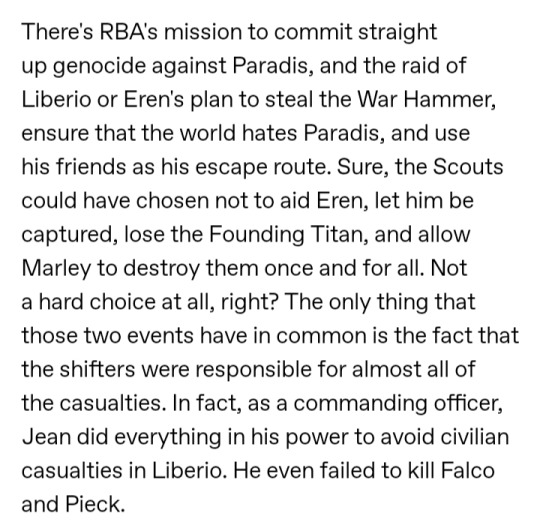
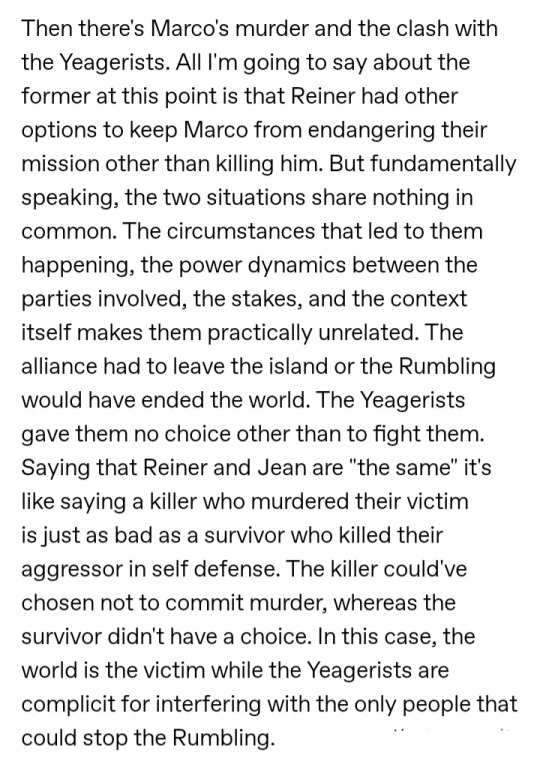
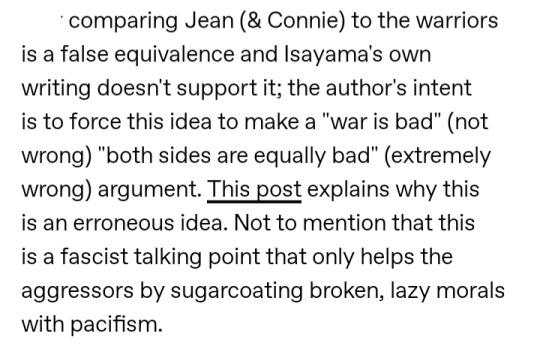
-> The link to the post in the screenshot
Jean and Connie and the Scouts that attacked Liberio aren't just wrongfully presented as something they're not, they're also used as tools to rationalize what Reiner and co have done to them throughout most of the series. Jean briefly does that with what Reiner did to Marco before he punches him to a pulp. Then again with the "we're the same" bs. Then again with implying Reiner is one of them as a Scout. There's also no real tension between the warriors and the Paradis side of the alliance. What the warriors did to Paradis is truly horrific, so their only way for redemption is through their victims.
The mistake that most people do when they interpret their relationship or the characters themselves is to only look at the characters' in-story intent. But there's also this thing called the author's intent that overrides everything. Sometimes, you cannot separate an author from their work. Especially when it comes to the final 12 chapters, where the quality of the writing is in the sewer.
But there's actually another way through which these characters were redeemed: the introduction of a much greater evil and a much horrific event that makes everything else pale in comparison. The main conflict of the story was revealed to have always been Eldians vs Eldians. But that wasn't always the case. Not until isayama retconned Eren, and then treated him the same way he treated the warriors. Eren's friends refused to condemn his actions, and instead repeatedly rationalized, then absolved and thanked him for what he did. It doesn't matter that they still did what was right in the end, that Mikasa killed him, or that Armin admitted they're both going to hell for the atrocities they've individually committed. In the anime. Which came out almost 3 years after the release of chapter 139+the extras and the massive backlash that followed. Let's not forget how that conversation went in the manga:

None of that matters because there's a dissonance between their actions & words and their attitude. isayama couldn't condemn any of his genocidal characters in a way that matters, in a way that would leave no room for moral ambiguity. But perhaps the greatest injustice isayama has committed to his own characters, story and messages was to retcon Eren, the character that was at the center of a message as powerful as the idea that we're all special because we're simply born in this world, into a genocidal maniac that cared about no one and nothing (if he actually cared about his friends, he wouldn't have put them through living hell, not when he actually had the power to prevent it, and if he actually cared about his mother, he wouldn't have killed her) through one of the worst executions of the time travel trope I've ever seen.


Snk is not a story that condemns fascism, let a lone a "masterpiece" when it comes to social or political themes, because it's centralized on justifying the oppression of the Eldians and making it an integral part of the plot. Not only are the Eldians an obvious metaphor for Jews, which is antisemitic on its own given how it's executed, but isayama ends up making them truly horrific because he takes real world antisemitic conspiracies and turns them into factual realities in his own story, all while seemingly acknowledging that Jews have been oppressed and the victims of the worst genocide in history. Moreover, the Eldians also seem to be ideologically inspired by imperial Japan, Paradis in particular. As @ shangyang points out in their essay, we shouldn't forget the fact that this is a manga authored by a Japanese man, nor that Japan has its own history with fascism. (Plesse don't skip any of the posts linked here)
All that being said, isayama's true intent is more than clear: violence is praised because his characters were written so to see violence as their only option, and the fascist mentality of eternal warfare as the status quo. Pacifism is not presented as an option. There's no nuance, only extremism. Even the cycle of hatred at the very end only serves as proof that the intent of the story is to present an extremely narrow worldview in which the human species is only capable of perpetual warmongering, hatred, destruction, and death. Which is wrong and is the very opposite of what I'd call "nuance", imo. And the reason this bothers me so much is because snk and other "morally grey" works alike aren't portraying evil people as just that, people, and evil as something that exists in all of us - no, what they're doing is making the unlikeable likeable, the unjustifiable justifiable, and they're making people sympathetic towards things they shouldn't be sympathizing. Such narratives are banalizing evil (if I had a nickel for how many posts I've seen justifying what Magath did or outright saying they love the guy, well I'd have a lot of nickels) and depreciating good (lots of nickels for all the posts I've seen bashing the Scouts). Such narratives serve as propaganda for the things they claim to condemn.
The result is that such stories beget ignorance, and ignorance is a fertile ground, whether is the case of people who are only interested in shipping and blorbofication, or the people who are not properly educated to know what they're dealing with.
And there's a reason actual fascists and neonazi are circling the series like flies, identifying with the yeagerists, and saying that "Eren was right". They're not taking control of the narrative, they're seeing it for what it really is. The progression of Eren's character arc, his motivations, the retcons, the conclusion of the story, Ymir's motivation, the undeserved redemptions, the characters not behaving in ways they should based on their history, none of those things make sense because they don't have to make sense. They're only pretexts meant to mask the actual intent of the story. The cycle of hatred didn't end because the rumbling truly failed. Because "the enemy" (the people outside Paradis, all of them, as Eren made it very clear) wasn't completely obliterated. Because as long as there's "the enemy", there can't be peace. Fascists have a complex relationship with war. They don’t like it, but "the enemy" is always forcing their hand. The rumbling was meant to succeed.
This is not a cautionary tale for anti-fascists.
Snk is a cautionary tale for fascists.
Now recontextualize all of that in present-day fascist politics, and see where it takes you. But ofc, this is only my interpretation, based exclusively on the story itself.
#the more i look into this shit the worse it gets#anti aot#aot#snk#attack on titan#shingeki no kyojin#aot meta
58 notes
·
View notes
Text
Monuments in the midst of an eternal storm. Region in the upcoming Hyperborean Path expansion mod!
66 notes
·
View notes
Text
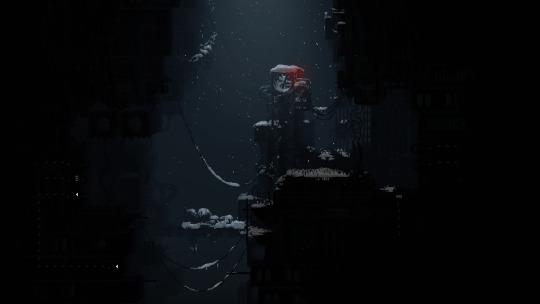
Ive decided to start posting my rain world modding stuff on here actually. so here u go, a Hyperborean Path room ive made :}
10 notes
·
View notes
Text
“Neither by land nor by sea shalt thou find the path that leadeth unto the Hyperborean maidens. Beyond the North, the ice, and death—our life, our joy. Lo, we have found the way forth through thousands of years of labyrinth.” —Nietzsche
International Women's Day (March 8)

#women#womens rights#womens day#march 8#international women's day#girl power#nietzsche#opera#music#community
4 notes
·
View notes
Text

Proprio come Platone citava la leggenda egiziana dell'isola sommersa di Atlantide, lo storico greco Erodoto menzionò la leggenda egiziana del continente di Hyperborea nell'estremo nord.
Quando il ghiaccio distrusse questa antica terra, si diceva che la sua gente fosse migrata a sud.
Scrivendo nel 1679, l'autore svedese Olaf Rudbeck identificò i Proto-Atlantidei con gli Iperborei e li localizzò al Polo Nord.
Nella mitologia greca il popolo iperboreo viveva “al di là del vento del nord”.
I Greci pensavano che in Tracia abitasse Borea il Dio del Vento del Nord (uno degli Anemoi, o "Venti") e quindi Hyperborea indica una regione che si trovava ben a nord della Tracia.
Erodoto ha registrato che tre fonti precedenti menzionavano gli Iperborei tra cui Esiodo e Omero.
Questa terra è stata descritta come perfetta con il sole che splende 24 ore al giorno suggerendo una posizione all'interno del Circolo Polare Artico. Secondo il poeta greco classico Pindaro.
“Mai la Musa è assente dai loro sentieri: le lire stridono e i flauti piangono e ovunque volteggia il coro inaugurale. Né la malattia né l'amara vecchiaia si mescolano al loro sacro sangue; lontani dal lavoro e dalla battaglia, vivono”.
Insieme a Thule, Hyperborea era una delle numerose terrae incognitae per i greci e i romani dove Plinio, Pindaro ed Erodoto, così come Virgilio e Cicerone, riferirono che le persone vivevano fino a mille anni e godevano di una vita di completa felicità.
Ecateo di Abdera raccolse tutte le storie sulla corrente iperborea nel IV secolo a.C. e pubblicò un ampio trattato su di esse perduto per noi ma annotato da Diodoro Siculo:
“Nelle regioni oltre la terra dei Celti c'è un'isola nell'oceano non più piccola della Sicilia. Quest'isola continua la storia si trova a nord ed è abitata dagli Iperborei, che hanno questo nome perché la loro casa si trova oltre il punto in cui soffia il vento del nord (Boreas); e l'isola è fertile e produttiva di tutti i raccolti e ha un clima temperato. "
Fonte: giardini atlantidei
°°°°°°°°°°°°°°°°°°°°°°°°°°°°°°°°
Just as Plato cited the Egyptian legend of the submerged island of Atlantis, the Greek historian Herodotus mentioned the Egyptian legend of the continent of Hyperborea in the far north.
When the ice destroyed this ancient land, his people were said to have migrated south.
Writing in 1679, Swedish author Olaf Rudbeck identified the Proto-Atlanteans with the Hyperboreans and located them at the North Pole.
In Greek mythology the Hyperborean people lived "beyond the north wind".
The Greeks thought that Boreas the God of the North Wind (one of the Anemoi, or "Winds") inhabited Thrace and therefore Hyperborea indicates a region that was well north of Thrace.
Herodotus recorded that three earlier sources mentioned the Hyperboreans including Hesiod and Homer.
This land has been described as perfect with the sun shining 24 hours a day suggesting a location within the Arctic Circle. According to the classical Greek poet Pindar.
“The Muse is never absent from their paths: the liras screech and the flutes cry and she whirls the inaugural choir wherever she goes. Neither sickness nor bitter old age mingles with their sacred blood; far from work and battle, they live ".
Along with Thule, Hyperborea was one of several terrae incognitae to the Greeks and Romans where Pliny, Pindar and Herodotus, as well as Virgil and Cicero, reported that people lived up to a thousand years and enjoyed a life of complete happiness.
Hecateus of Abdera collected all the stories about the Hyperborean current in the 4th century BC. and published an extensive treatise on them lost to us but annotated by Diodorus Siculus:
“In the regions beyond the land of the Celts there is an island in the ocean no smaller than Sicily. This island continues the story is located in the north and is inhabited by the Hyperboreans, who have this name because their home is located beyond the point where the north wind blows (Boreas); and the island is fertile and productive of all crops and has a temperate climate. "
Source: Atlantean gardens
28 notes
·
View notes
Note
This seems obvious, but top 5 sorcerer bloodlines?

THIRD PARTY MATERIAL! They allow me to special summon-
(Cough.)
Anyway, favorites, which need not be Paizo-made material.
#5: Mana Bloodline (Kobold Press)
Psychic Powers
Originally, I had gone with the Hyperborean (rainbow) bloodline here, but it's not all that great mechanically. This one is at least functional, if not well written. (Kobold Press has a problem with that. They seriously need an editor.) The name alludes to some flavor material that at the face of it (from the SRD, at least) relates in no way to the class abilities, which are all about telepathy and telekinesis (not even clairvoyance, let alone teleportation). Still, of the myriad psionic-esque bloodlines, it's the second most functional.
#4: Haunted Bloodline (Paizo Fans United)
Possessed Bloodline + Psionics
Paizo has its own Possessed bloodline ("you're powered by having another spirit possess you") which in some ways fits the idea better, but it is by no means as good as this one. I list "+ Psionics" because the abilities are perhaps the best at replicating a psion without explicitly being psychic-themed. My only quibbles are with the range of the 1st-level ability (again, 30 ft. is crap), the number of times per day you can use Spell-Like Thoughts (treat spells you cast as having Silent and Still applied without increasing casting time or the level of the spell slot), and the bonus spell list (various illusions instead of all Phantasms, which the bloodline is themed around). It's an older (2010) bloodline, though, so it may be due for some revision.
#3: Impossible
Misc.; Spells Dealing with Constructs
This one is mostly a thematic like than it is a mechanical one. It's all over: you can cast animate objects (hard to get as an arcane spell for no good reason [did no one read Goethe or watch Fantasia?]), affect constructs with mind-affecting abilities, walk on walls, and eventually reveal yourself to be made out of galaxies or something. It's just fun.
#2: Starsoul (and Void-Touched)
Stars and Space
I mean, it's me: I'm a sucker for stars. This is basically Meteor: the Bloodline. Well, kinda. It's not the greatest mechanically, I don't think, but it's off the beaten path if you're looking for evocation.
#1: Arcane (and Sage)
Metamagic. Familiars.
Need I say more? I do? Okay.
In 3.0 (the Sorcerer's origin edition) and 3.5, the Sorcerer had two class features: spells and a familiar. That was it. (I'm not sure why they didn't get more class features in 3.5 given that by that point people had weighed in and said that Vancian casting is more powerful, but whatever.) I'm rather attached to the concept. To me, anything that gets rid of a Sorcerer's ability to acquire a familiar is wrong.
Anyway, this gives you a familiar as a default option. Technically (as of Familiar Folio) you can get a familiar with any Bloodline, but usually by giving up its 1st-level ability, which quite often I don't want to do.
The better reason (that is, the one that's sound regardless of personal preference) is that this bloodline lets you use metamagic without a problem, which is rather important. As someone on one of the optimization boards said, if magic is the most powerful mechanic in the game, then anything that augments it (like metamagic) can border on the broken. And now, you don't have to waste time doing it! :D
THAT SAID, there are other ways of getting the same ability without taking the Arcane bloodline. (Sadly, some of those make you give up the familiar. Others are feats.) But then you also get more spells known, which is kind of a big deal.
Sage is cool because you can consolidate your stats into Int, which should go without saying as a good idea (even if I think Cha has a tastier flavor).
15 notes
·
View notes
Text
Go South
In this suffocating cellar of
nonconsensual alchemical betrothal
where everything is connected
and nothing only itself
tell her to go south.
In the world of hidden things
hidden relationships
this isn’t normal steam
from which a cast-iron samovar drifts
believe her obstinate cry
“They weren’t created for this!”
dramatically casual mentions of
salt marshes, shallow streams
unpredictably
water courses shift
mirage-flicker of promise
trembling, just out of reach
Connecting-rods and pistons
in the
steady
confidant
beat
of lubricated machinery
testifying
U N I T Y
That smoke-filled cellar
(or was it a tobacco-heavy parlour?)
where everything felt alive
no longer perpendicular
And of the dull, mechanical toil;
every step
at least
was a movement born of intention
on the path back to Her.
Vodka or clavicula?
or is it sickly bitter tea?
just keep pouring
I’ll say ‘when’
go south!
is it not family you seek?
Finding a way back to them
Rusakov and Dust again
searching for that Blue Hotel
the distant glimmer
of a rose-tinted structure
ever beckoning
that body-throb
melt and yearn
for this forbidden phantom limb
impossible, unreachable...
it could only ever be for Him.
Oh, this sultry current of languid longing
to which she is forever condemned
to drift
no nearer sleep than ever
by water and by land
Reluctantly
he gulps the oily fire
the repugnant priest
reciting hymns of putrid pitch
through the head-swim, the stomach-lurch
he registers the command:
“Go south, Will Ivanovich!”
All her atoms reaching out
to what floats over willingly
alive and full of purpose
all his containers lit
(are they lit for me?)
by each spirit responsible
busy, calm, so complete
still
the ever-growing hunger
for this Great Work’s conclusion
of which is yet to be
remains
surfacing to air on empty waste
the night sky’s hyperborean chill
connects her spangled wind
to these blessed lungs
a-million-filled
the cathedral striking two
off they set toward the trains
exchanging a hard-earned scorched hand
the sting of which arrives unanticipated
a casualty forgotten too late
a burnt toast
to an obtuse evening in Prague
the value of which may surely be
unquantifiable
at this time
but for now it has offered direction
permission
to go south with certainty
by the sole illumination
of the booking office window
an attempt at gratitude dispensed
uttered under astonished breath
and collapsing against the sheltering embrace
of the sleeper cabin
in some alive exultant agony
dissolving into slumber
over a crystalline cradle
of destination resolute
.
.
***
lol nm just playing with intertextuality between Ch. 8(‘Vodka’) The Amber Spyglass and Ch. 20(‘The Furnace-Man’) of The Secret Commonwealth, wbu?
#the secret commonwealth#the furnace-man#the furnace man#prague#lyra silvertongue#the book of dust#will parry#vodka#the amber spyglass#go south#parallels#intertextuality#hdm#his dark materials#kholodonye#the red building#alchemy#agrippa
23 notes
·
View notes
Text
The Misunderstanding of Racist Neo-Paganism
Title: The Misunderstanding of Racist Neo-Paganism
Tags: #Evola #Traditionalism #NeoPaganism #Racism #ChristianApologetics #AryanCivilization #SpiritualHierarchy #Symbolism #Initiation #Metaphysics
Misconstruction of Paganism by Christian Apologetics: The term "paganism" was constructed by early Christian apologetics as a derogatory label to discredit pre-Christian traditions, focusing on their decadent aspects rather than their original, sacred forms.
Neo-Paganism’s Paradox: Modern neo-pagan and racist movements often adopt this distorted view of paganism, perpetuating a false narrative that aligns with Christian polemics rather than the true essence of pre-Christian traditions.
Naturalism Misinterpreted: Contrary to the Christian portrayal, the Aryan and pre-Christian worldview was not naturalistic but symbolic-sacral, seeing nature as a manifestation of a higher, supra-sensitive reality.
Symbolic Understanding of Blood and Race: Ancient traditions understood blood and race not in a biological or superstitious sense but as carriers of supra-biological, spiritual elements, reflecting a deeper metaphysical knowledge.
Initiation and Mysteries: Pre-Christian civilizations, particularly Aryan ones, emphasized initiation and mysteries as paths to spiritual liberation and the reconquest of a primordial, Hyperborean state of being.
Healthy Dualism: The pagan worldview embraced a dualism that subordinated nature to a higher spiritual order, rejecting the notion of a purely naturalistic or deterministic existence.
Aspiration to Supernatural Freedom: The Aryan traditions sought metaphysical fulfillment and the realization of personality, transcending the material world through initiation and spiritual discipline.
Imperial Vocation and Sacred Hierarchy: The Aryan concept of empire was not merely political but metaphysical, reflecting a sacred hierarchy where the spiritual authority guided the temporal, as seen in Roman and Indo-Aryan traditions.
Critique of Neo-Pagan License: The idea of pagan "innocence" or license is a myth; even in primitive societies, life was governed by strict taboos, and the classical ideal was not the cult of the body but the dominance of spirit over matter.
Rectification of Historical Distortions: A proper understanding of pre-Christian traditions requires rejecting the polemical distortions of Christian apologetics and recognizing the sacred, hierarchical, and metaphysical dimensions of Aryan civilizations.
THE MISINTERPRETATION OF RACIST NEO-PAGANISM
The term paganus appears in ancient Latin writers, such as Livy, without any specific intent. However, from the rise of Christianity onward, paganus took on a derogatory meaning, used by early Christian apologists for polemical purposes. Derived from pagus (village or township), it came to signify something rustic, primitive, and uncultured. To elevate the new faith, Christian apologetics systematically distorted and denigrated pre-Christian doctrines, cults, and traditions, labeling them collectively as "paganism."
Thus, "paganism" as constructed by Christian apologetics lacks true correspondence with historical reality, particularly the "normal" forms of pre-Christian, especially Aryan, civilizations. Ironically, many neo-pagan and anti-Christian nationalist and racist movements today base their ideologies on this distorted construct, effectively bringing it to life for the first time in history.
The predominant Christian portrayal of paganism includes several key features:
Naturalism: Paganism is depicted as ignoring transcendence, conflating spirit and nature, and divinizing natural phenomena or racial energies.
Particularism and Polytheism: It is characterized by earth- and blood-bound polytheism.
Absence of Personality and Freedom: Paganism is seen as a state of "innocence" or natural license, devoid of supernatural aspiration.
Superstition and Materialism: It is associated with superstition or a purely materialistic, fatalistic worldview.
Christianity, by contrast, is portrayed as introducing supernatural freedom, grace, and personality, along with a universal ideal that subordinates nature to a higher spiritual order.
However, this portrayal is inaccurate and one-sided. The non-Christian, particularly Aryan, world in its normal forms was not defined by superstitious naturalism but by a symbolic-sacral understanding of reality, where the material world reflected a supra-sensory dimension. Far from promoting license, pre-Christian civilizations embraced a healthy dualism, evident in Aryan-Iranian, Doric-Aryan, and Indo-Aryan traditions, which distinguished between the material and the transcendent.
Moreover, the aspiration to supernatural freedom and metaphysical fulfillment was central to pre-Christian Aryan civilizations, as seen in their mystery traditions and initiations. These often aimed at reclaiming a primordial, Hyperborean spirituality. The so-called "cult of the body" in paganism is a myth; even among so-called primitive societies, life was governed by rigid taboos, often stricter than those of organized religions.
Finally, the "pagan" world, particularly in its Aryan manifestations, exhibited a super-particularistic aspiration toward empire, rooted in a metaphysical vision of the state. This is evident in the Aryan-Iranian concept of the "king of kings," the Indo-Aryan cakravartin, and the sacred aspects of the Roman Empire. Far from promoting statolatry or totalitarianism, these traditions upheld a hierarchical unity of spiritual and temporal authority, reflecting the sacred order of the "solar race."
In summary, the neo-paganism embraced by extremist racist movements is based on a distorted construct of paganism, one that fails to reflect the true historical and spiritual richness of pre-Christian Aryan civilizations.
Metaphysical part:
The religious perspective can be succinctly defined as centered on the conception of the deity as a person (theism), characterized by an essential, ontological distance between this personal God and humanity, and thus by a transcendence that allows only relations of dependence, devotion, or mystical ecstasy, while maintaining the boundary between the human "I" and the divine "You." In contrast, initiation is premised on the removal of this boundary, replacing it with the principle of "supreme identity," which corresponds to a supra-personal conception of the First Principle. Beyond the personal God lies the Unconditioned, a reality superior to both Being and non-Being, transcending any religious representation. In Hindu metaphysics and original Buddhism, for example, personal gods and celestial realms are acknowledged but are considered part of the conditioned realm, with the absolute lying beyond them. Similar conceptions are found in Neoplatonism, which is linked to the Greek Mysteries. This demonstrates the arbitrariness of indiscriminately using the term "religion" when discussing humanity's relation to the supra-human world.
From a practical standpoint, the metaphysical principle of identity shifts the focus from moral and devotional relations to those based on knowledge. The human condition is defined not by ontological distance but by "ignorance" or "oblivion." This idea is echoed in high mysticism, such as in Meister Eckhart's assertion that man is God but does not know it, paralleling the Hindu concept of avidya (ignorance). Salvation or redemption is thus replaced by awakening, a metaphysical awareness of transcendence. The initiate's realization is characterized by "centrality," opposing ecstasy with en-stasy, a reconvergence toward the center rather than an outward movement. Mysticism also recognizes the idea that the divine is found within, not outside, oneself.
The distinction between the religious and initiatory horizons is further clarified by the traditional esoteric doctrines, which differentiate between immortality and mere survival. In religious conceptions, the soul is inherently immortal, with its post-death state determined by moral criteria (heaven or hell). In contrast, esoteric doctrines view immortality as uncertain and problematic, with the alternative being survival or non-survival, particularly at the moment of a "second death." True immortality, as a deconditioning of being, is an exceptional possibility and the aim of high initiation. This concept is evident in ancient Egyptian texts, the Old Testament, Greek traditions, and operative Taoism, where immortality is tied to initiatory conditions. The Tibetan Book of the Dead further elaborates on these ideas, presenting the phenomenology of post-death experiences and emphasizing the realization of the unconditioned over transient forms of existence.
The initiatory perspective also contrasts with exoteric religious views on the naturally immortal soul, often seen as a democratization and degradation of earlier esoteric teachings. For instance, in ancient Greece, the original conception of the "hero" was diluted over time. The Mystery traditions highlight the ontological distinction between initiation and religion, as seen in the Greek scandal over the idea that even a criminal could achieve a privileged post-death destiny through initiation, regardless of moral standing. This "transcendental realism" is reflected in the objective effectiveness of initiatory rites, which operate impersonally and independently of morality, akin to a craft.
The presence of moral precepts in initiatory traditions, such as yoga, does not negate the distinction between religion and initiation. In religion, moral laws are intrinsically imperative, often seen as divine or absolute. In initiation, moral precepts are instrumental, serving as provisional means to create favorable conditions for transformation. This is illustrated by the Buddhist metaphor of the raft: moral precepts are tools to cross a river but are discarded once the goal is achieved. The relativity of moral precepts is evident in their social and transcendent applications, with their value determined by their effectiveness in achieving the initiatory goal. This instrumental approach allows for diverse paths, including the "Left-Hand Path" of Tantra and the "heroic path," which may reject conventional moral and religious rules while pursuing the same ultimate end as the "Right-Hand Path." Antinomianism, the rejection of religious norms, is often linked to esotericism and initiation, further underscoring the distinction between religious and initiatory perspectives.
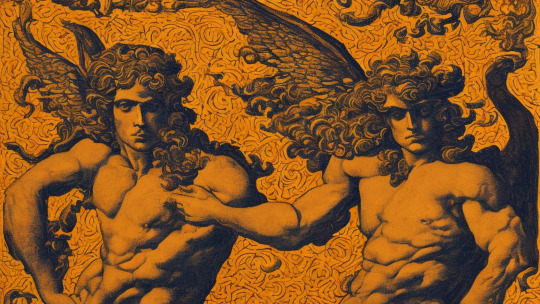
0 notes
Text
“Misty Meets, the Valued Rocks and Seas”
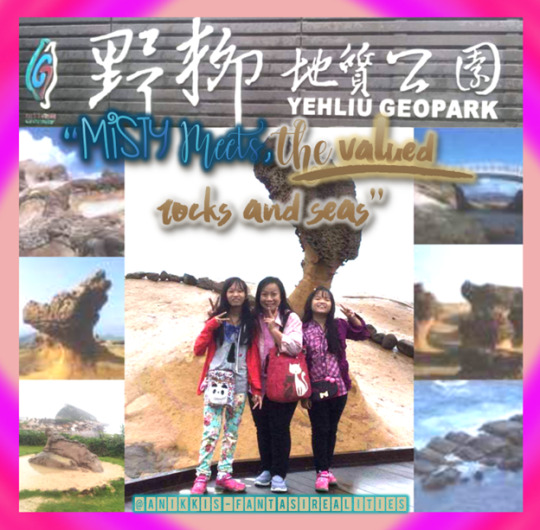
② Travelogue ┊ ᵗʰᵒˢᵉ ʷʰᵒ ᵃʳᵉ ᵗʳᵉᵃᵗᵉᵈ ʷᶦᵗʰ ᵗʳᵃᵍᵉᵈʸ ᵃˢ ᵗᶦᵐᵉ ᵗʳᶦᶜᵏˡᵉˢ··· ᵗʳᶦᵖ ᵇᵘᵗ ᵇᵉᶜᵒᵐᵉ ᵗᵃᶜᵗᶠᵘˡ ᵗʳᵉᵃˢᵘʳᵉˢ ᵒᶠ ᵗᶦᵗˡᵉᵈ ᵗᵉˢᵗᶦᵐᵒⁿᶦᵉˢ·
꒰⁺˚₊·₍₍loading...₎₎ ✎...۪۫❁ཻུ۪۪ -ˏˋ 🗺 ˊˎ- ༘✶ ㊉ ㈦〘 ⅯⅯ 〙⋆。˚𓆟 ༉ ║ Posted : 06/15/21° 。༄ ‧₊˚ ๑ ㅤ ㅤ ㅤ ㅤ •ଓ.° 。❍ ㈩ ㊇
- - ——— ꒰ An article by Nicole “Nikki” Elaine S. Chua ꒱

ㅤㅤ ㅤㅤ₊·͟͟͟͟͟͟͞͞͞͞͞͞➳❥ ࿐ྂ—͙❬₊° ᶦ ᵃᵐ ᵃ ᵇˡᵒᵍᵍᵉʳ ᵃᶠᵗᵉʳ ᵃˡˡ·“= ‹⸙͎
ㅤ ㅤ ㅤㅤ ㅤ ❐ · ⸰ㅤ ㅤ ⋇ · ◦ ㅤ ㅤ ⁕⸰ ㅤ ㅤ ☁
⊹ ㅤ ㅤ ⋇ ㅤ ㅤ ·⁕ ㅤ ㅤ ◦ ❏ ⋇
ㅤ ㅤ ◦ ⸰ ㅤ ㅤ ◍ ㅤ ㅤ ⊹ ⁺
· ㅤ · ⊹ㅤ ㅤ ⋇ · ◦ ㅤ ㅤ ㅤ
ㅤ ㅤ ㅤ · ❏
ㅤ ㅤ ㅤ ㅤ ㅤ ㅤ · ⁕ ㅤ ㅤ ⋇ ⸰ㅤ ㅤ ❐ ⊹
ㅤ ㅤ ㅤㅤ ㅤ ❐ ⊹ ·
ㅤ ㅤ ❐ ⊹
ㅤ ㅤ ㅤㅤ ㅤ · ⊹ ⋇ · ◦
ㅤ ㅤ ㅤ · ❏
ㅤ ㅤ ㅤ· ㅤ ㅤㅤ⁕ ⸰ ㅤ ㅤ ㅤ⊹ · ⁕
ㅤ ㅤ ㅤ❐ ⊹
ㅤ ㅤ ㅤ ㅤ ㅤㅤ.ㅤ ㅤ ㅤ .
ㅤ ㅤ ㅤ. ㅤ ㅤ ㅤ.
ㅤ ㅤ ㅤㅤ ㅤ ㅤ.
ㅤ ㅤ ㅤ.
“Wait, it’s about to rain?” I can vaguely remember saying something similar to those impulsive thoughts, as I look up into the gray skies and those monotoned clouds steadily sailing in mid-air. I felt the raindrops on my face—the mix of awe and worry from my father, mother, and sister who were about to trek on those rocky grounded fields of the wild Yehliu. The other visitors, whose language I could not understand, fiddled through their belongings. They opened umbrellas and covered themselves in pastel-like colored jackets, transparent in design, as I observed their casual clothing for a supposed sunny adventure. This was about to be one of the greatest family travels out of the thousand places I’ve visited—one that was like no other.
Welcome to 𝙔𝙚𝙝𝙡𝙞𝙪 𝙂𝙚𝙤𝙥𝙖𝙧𝙠 𝙞𝙣 𝙏𝙖𝙞𝙥𝙚𝙞, 𝙏𝙖𝙞𝙬𝙖𝙣! For this article, I’d like to tour you around one of the most memorable and breathtaking travel destinations that my family and I visited during our second vacation in Taiwan. To be honest, the Chuas loves to stroll around new locations together—whether we linger the Pearl of the East, or the rest in the Heart of Asia. Whenever there is time to escape from the world of academics, we break out from that comfortable 3D box to walk to the outskirts of recreations, entertainment, and sights to behold. Dad, who was always our captain on the steering wheel of our adventures, would schedule the perfect itineraries during our summers. Mom tends to take pictures and post mementos of our times together on Facebook—as my sister and I enjoy the blissful moments noted in our own book of life.
This geopark, however, gave a different kind of atmosphere to our typical visits. The humidity has been thickening and the cold crisp air swept through the open area. A geopark is molded by nature’s wonders. There are no futuristic buildings, leaning towers, nor brilliant inventions of men standing uproot, rather, jaggy rocks and murky land persists in this long-cape landscape. It has 1,700 meters of earth carved from top to bottom—shaded by bland hues of brown and green. However, such a scenery cannot be underestimated just because there is nothing but bumpy stones, flimsy pathways, and barren holes on the crust. This is the sole reason why it is visited, for Yehliu Geopark is not only a tourist attraction, but also a habitat for rich ecological resources and thriving fishing communities. The entirety of Yehliu’s cape runs through a sea—yes, you read it right, a 𝙨𝙚𝙖𝙨𝙝𝙤𝙧𝙚 of soothing waves that compliment the greenery of the mountains above.
╭⋟──────────────────────────────────────╮
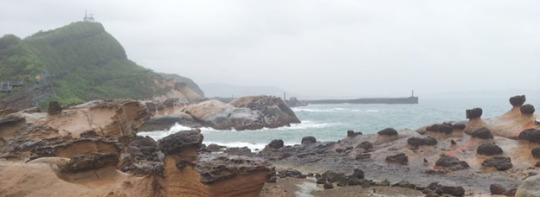
ㅤㅤ ㅤㅤㅤ❝dissolve into seafoam. ❞
╰──────────────────────────────────────⋞╯
Do you know the story of how Yehliu Geopark became to be in its present form? Each rock and stone structure in this site has its own character, as if they are interacting with one another. The locals here in Yehliu witnessed how nature refined itself with its own miracles. Hence, they are also the ones who shared the geopark’s origins to tourists like us. The landscape was crafted by marine erosion, because it so happened that the seashore’s layer is made out of limestone. Because of the scientific method of weathering and movement by the Earth, the limestone crumbled over time—dissolving slowly by the seawater bashing itself into land. It resulted into those eerie, yet interesting sea-water eroded holes on the ground. What’s even more amazing is the fact that because of the flurry winds, blinding sunrays, salty water, harsh rains, and dreadful northeastern monsoon paths, the rocks gained identity and almost became celebrities due to their unique figures.
It is truly a work of God, that these elements who continuously burdened stones to rapidly change and adapt to the impact they cause, made them into what they are today. It is like humans, who also tolerate, endure, and persevere from pain to transform into better people—tested by time, yet surviving with resolve. The day my family and I visited the geopark, the rain drizzled from the heavens. There was the thought that I could slip over wet ground and plunge into the sea if I was not careful, but looking around, I figured that this peaceful nature will not allow anyone to be taken by its mystical works. It embraces you, like there’s nothing to be scared about. Instead, it greets you hello with open arms—wanting us to continue our plans despite the misty dewdrops.
╭⋟──────────────────────────────────────╮
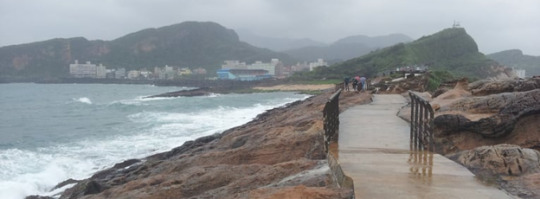
ㅤㅤ ㅤㅤㅤ❝ bridge to terabithia. ❞
╰──────────────────────────────────────⋞╯
The chilly atmosphere was actually quite relaxing, especially when nature desires its visitors to breathe for a while after an industrious environment in the urban society. My family and I walked with our umbrellas on our heads with smiles on our faces—the waves from the sea yearning to approach us, only being stopped by the sturdy ground that we walked on. If ever you visit Yehliu Geopark, you must get ready to meet some of the rocks in this travel destination! There are candles, mushrooms, a cute princess, that arch-shaped gorilla, some kind of marine bird, ice cream, tofu, and the main attraction: the Queen’s head. Just like the other tourists, we did not hesistate to take home souveniers of our adventures from the unwinding views we’ve seen. Even though more than 1,000 meters is a big horizon to explore, we walked around—hoping to spot more rock formations.
╭⋟──────────────────────────────────────╮

ㅤㅤ ㅤㅤㅤ❝ uniting the cynosure’s roads. ❞
╰──────────────────────────────────────⋞╯
Imagination is what created those rock formations’ attributes and parts in this still story of Yehliu. If you have tons of imagination of both the possible and impossible, then your sightseeing will be plenty of fun to commit to! The 𝙈𝙪𝙨𝙝𝙧𝙤𝙤𝙢 𝙧𝙤𝙘𝙠𝙨 are like little children sitting on the seashore, except they were not just two but 180 of them all together in one area. After stepping with caution across the slippery rocks, you will notice a familiar figure that looks like a woman with a large headdress. She wears it with all honor and responsibility as the star of Yehliu. Oh! You guessed it, we found the 𝙌𝙪𝙚𝙚𝙣'𝙨 𝙃𝙚𝙖𝙙! We captured a shot with her hazel beauty which you can see in my cover edit. Mission accomplished, now let’s look for the other rock characters, shall we?
╭⋟──────────────────────────────────────╮
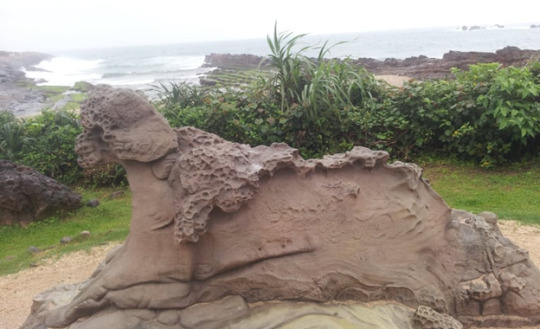
ㅤㅤ ❝ ephemeral angst, nefarious epiphany. ❞
╰──────────────────────────────────────⋞╯
After walking for a while over bridges and stairways that connect the geopark together, we discovered the 𝘾𝙖𝙣𝙙𝙡𝙚 𝙧𝙤𝙘𝙠𝙨. They were soaked in sea-water, so its usual beige color like all the rocks we’ve seen so far has dimmed to pitch black. Though, you will be surprised that they are shaped like short candles—with their wicks sticking out in the middle, as if it has already melted deeper into its center. According to the brochure we held before entering the tourist spot, these rocks were originally ball-like concentrations with softer surfaces, before they were completely scoured off. So, that must be the magic of Yehliu, huh?
Then, we noticed an unique rock formation that was not documented on boards or printed material by the management. It was like an animal, laying down on a rock—resting with pride and confidence. I wanted to call this the 𝙇𝙮𝙣𝙭 𝙧𝙤𝙘𝙠, because it looks like a feline who is about to hunt, perhaps the marine bird from meters away. It’s not the official name of the rock formation, though, I felt closer to it when I made the connection. I felt chills all over my body when I heard the tiny pitter-patters hit my navy blue umbrella. It was definitely a fateful encounter—the calm rain, the rushing of the sea ridges, and a new found friend. When you come over to Yehliu, do say hello to Lynx for me! I terribly miss her, after all these years that I haven’t picked up my suitcase for another trip.
╭⋟──────────────────────────────────────╮

ㅤㅤ ❝ the serendipity of tranquil encounters. ❞
╰──────────────────────────────────────⋞╯
There is apparently an anecdote documented in Yehliu’s history about a certain fisherman, namely “𝙇𝙞𝙣 𝙏𝙞𝙖𝙣𝙯𝙝𝙚𝙣.” In 1964, a group of students were visiting the scenic charm of the rocks and sea, when one of them unintentionally fell into the sea. Without thinking twice, Lin Tianzhen showed his courage and jumped into the raging sea to save the helpless pupil. Sadly, none of them were able to come back to shore alive—devoured by the depths of the salt water, unaware of its crime. When the news came to the attention of President Chiang Kai-Shek, the first president of Taiwan, he quickly ordered for a monument of Lin Tianzhen to be built in Yehliu. That’s why if you would see a marble sculpture of a man in baggy pants, that is the heroic fisherman in the stories of the locals here.
Throughout the rest of the adventure we’ve challenged to carry on despite the moist surroundings, we faced the 𝘾𝙪𝙩𝙚 𝙋𝙧𝙞𝙣𝙘𝙚𝙨𝙨 and her adorable figure, like she was posing her bent head to the camera. We found the arched-shape 𝙂𝙤𝙧𝙞𝙡𝙡𝙖 𝙧𝙤𝙘𝙠, who stood still, yet to our surprise, it was a literal arch! You can see the Gorilla in one angle if you do it correctly, though, you could also look at it in another angle to realize that it has a hole through its structure. We raised our peace signs in eagerness of the enticing discovery while the camera flashed. The 𝙄𝙘𝙚 𝙘𝙧𝙚𝙖𝙢 𝙧𝙤𝙘𝙠 and 𝙏𝙤𝙛𝙪 𝙧𝙤𝙘𝙠𝙨 made us hungry, because they looked like actual food enlarged and hardened in their positions—though, of course, they never expired! I could imagine that famous Taiwanese ice cream brand scoop on that jar-like rock, and the dream of tofu soup, for the Tofu rocks laid in two rows within the middle of the sea.
╭⋟──────────────────────────────────────╮

ㅤㅤ ❝ a pluviophile soaked in hyperborean aqua. ❞
╰──────────────────────────────────────⋞╯
Since we were hungry, we looked for a place to fill our tummies to satisfaction. Thankfully, Yehliu Geopark still has facilities to accommodate tourists’ basic needs. A visitor’s center is established for dining, renting of wheel chairs & baby strollers, and inquiries of guests to the staff of the geopark. You can also ask for assistance from the friendly tour guides of the travel destination—if you are able to speak in Chinese, that is! Don’t worry—they are able to understand and speak basic English. Just make sure to pack your skills in speaking the foreign language if you’d like to talk more with the locals here, then! They also have a nursing station & lost and found section in the center in case of emergency or urgency, which is useful for scenarios such as the unexpected rain when we visited.
Because Yehliu Geopark takes care of the reefs and water ecosystems nurtured in their location, they also have a oceanpark in the geopark! It is called “𝙔𝙚𝙝𝙡𝙞𝙪 𝙊𝙘𝙚𝙖𝙣 𝙒𝙤𝙧𝙡𝙙,” though we were not able to spend time taking a peak into the realm of sea creatures and corals freely living in the pictures of exhibits. There are diving performers in the oceanpark, too, that make visitors astounded by their splendid act. Oh, and how can we not forget the souvenier shop for merchandise from Yenliu Geopark? It’s always great to show your loved ones how much you enjoyed Yenliu, its stories, and the sights you’ve seen! It also supports the geopark’s operation, so that it can continue its goal and mission to keep sharing the wonders of this valued scenic area by the Heart of Asia.
╭⋟──────────────────────────────────────╮
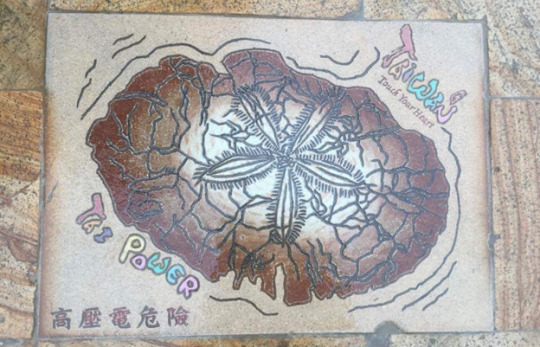
ㅤㅤㅤ❝ iridescently frozen in an ethereal epoch. ❞
╰──────────────────────────────────────⋞╯
There are also many earthy figures here that were molded by weathering. They are known as “𝙃𝙤𝙣𝙚𝙮𝙘𝙤𝙢𝙗𝙚𝙙 𝙧𝙤𝙘𝙠𝙨,” that possess an artistic style like that of a solidified sponge. Through these rock structures, Chinese culture is shown—an example being the “𝟮𝟰 -𝙛𝙞𝙡𝙞𝙖𝙡-𝙥𝙞𝙚𝙩𝙮 𝙝𝙞𝙡𝙡” that presents the importance of superiority and inferiority relationships to Chinese people. The hill of rocks have 24 men-like figures standing nearby each other, revealing a picture of hierarchy based on the positions of each men.
Additionally, the geopark has fossils scattered across its long cape. We only found this urchin fossil in the picture above, plaqued like a prized possession with the proud mark of Taiwanese tourism. The words, “Tai Power,” reminded me of the rest of the adventures that my family and I had in the warmth of this country. Even though the distress comes, it fades away with the power of bonds to go against the negativity to be refined everyday—that’s Tai Power, the ability to touch hearts wherever you are right now!
╭⋟──────────────────────────────────────╮

ㅤㅤ ㅤㅤ❝ petrichor at selcouth midday. ❞
╰──────────────────────────────────────⋞╯
Before I forget, if you’re looking for extreme activities, you can try tracking down the caves of Yenliu that were also crafted by nature’s power. They are placed in spots that are hard to reach by visitors—including me and my family who did want to risk getting harmed. Do try it out, however, if you’re looking for the thrill! There are other rock formations to uncover in Yenliu Geopark aside from the ones we were able to locate. You can trace down the footprints of a fairy in the 𝙂𝙞𝙣𝙜𝙚𝙧 𝙧𝙤𝙘𝙠𝙨 and notice the 𝙁𝙖𝙞𝙧𝙮'𝙨 𝙎𝙝𝙤𝙚 was left behind before it has taken flight again. The locals here believe in a legend that this fairy sent by the Jade Emperor, from Taoist beliefs, cursed a turtle elf who troubled the seas and caused many shipwrecks back in the day. So, if you see white smoke coming from the mountains, locals will exclaim that the turtle elf is taking its last breath. It’s a motivating tale to conclude this article, and our visit to the geopark.
Most importantly, I’d like to remind everyone who plans to visit Yehliu Geopark to obey and respect the guidelines given by the management of the landscape, as well as the North coast and Guanyinshan National Scenic Area Administration! If you observe red warning lines on the ground, do not pass that zone—always stay on the path, because it is for our own safety. Let’s 𝙥𝙧𝙚𝙨𝙚𝙧𝙫𝙚 𝙖𝙣𝙙 𝙥𝙧𝙤𝙩𝙚𝙘𝙩 these astonishing wonders offered to us by the beloved nature we owe daily. We need nature, but nature does not need us. We should not touch nor damage these creations of Mother Earth. Climbing & tagging on the rock formations, smoking, biking, wading, swimming, fishing, littering, or disturbing the plants in the location is strictly prohibited! Otherwise, you might need to pay for a fine when caught.
Our duty to look after Yehliu Geopark, while saving the environment in our own way, is for the sake of the next generations whose imagination will also be aroused by these treasured beings and narratives of this place. The staff would like more people to enjoy the unique scenery it offers to the world. The rock structures in this geopark are still actively developing and dynamically changing with the tides of our times today. So, it is only rightful if we give them the same amount of growth they need, as much as we do.
At the end of the day, the trip I had in Yehliu wasn’t too bad at all! It was beautiful, stunning scenery to keep in my memories as I move forward to the present. Through my travel to Yehliu Geopark, we were able to unveil the mist and take a glimpse of the true colors of ordinary rocks and common seas. We got to know many stories of still stones, and the amazing people who make the geopark the apple of the eye for more tourists. A part of nature—to witness its ability and wonders through an alleviating journey to find peace—Yehliu Geopark can surely be described that way. If you’re interested in travelling to Taiwan, Yehliu Geopark is a tourist spot that you absolutely must consider in your own bucket lists! Maybe not now while the pandemic is still ongoing, but someday, hopefully! I’d love to hear your own experiences in visiting the geopark in the comments!
╔ ———————————————————————————— ╗
Yehliu Geopark is open from 8 AM to 5 PM. One entry ticket costs 80 NTD or New Taiwan dollars for one adult tourist. On the other hand, kids aged 6 to 12 can avail an entry ticket half its price. In the Philippines, 80 NTD is 139.54 pesos, while 40 NTD is 69.77 pesos, as of June 15, 2021. However, you can get a 20% discounted group ticket if you are a group of 30 or more people. The geopark is located in the Heart of Asia—Taiwan! Its exact address is No. 167-1, Kantung Rd., Yehliu, Wanli, New Taipei City, Taiwan.
If you are already in Taiwan, you can get to Yehliu Geopark either through bus or car. There are four routes that you can choose from if you will ride on a bus. Meanwhile, if you choose to arrive at the geopark by car, there are five dispatch options that are possible to use, depending on your starting point. You can check this link for more information regarding a planned trip. Safe travels, and thank you for reading! Let’s meet again in another blog where my fantasies become realities! A Nikki reminder: find passion in your work, and you’ll never tire from it! See you!
╚ ———————————————————————————— ╝
· * ✫ * ⊹ * ˚ . . · ⋆ * . * . . · . · . * · . · · + . ㅤㅤ ㅤㅤ ㅤㅤ ㅤ ㅤㅤ ㅤ ㅤㅤ ㅤㅤ ㅤㅤ ㅤ ㅤㅤ ㅤ ㅤㅤ ㅤㅤ ㅤㅤ ㅤ ㅤㅤㅤㅤ· ** ˚ . . + · ⋆ * . * . . · . · . *
ㅤㅤ ㅤㅤ. . + · ⋆ * . * . . · . · .˚ ⊹ · * ✧ ⋆ · * . · . · · .. . .
ㅤㅤ ㅤㅤ ㅤㅤ ㅤ ㅤㅤ ㅤ ㅤㅤ ㅤㅤ ㅤㅤ ㅤ ㅤㅤ ㅤ ㅤㅤ ㅤㅤ ㅤㅤ ㅤ ㅤㅤㅤ ㅤ ㅤㅤ ㅤㅤㅤ· + ㅤㅤ ㅤ ㅤㅤ ㅤㅤ· * ✫ * ⊹ * ˚
ㅤㅤ ㅤ ㅤㅤ · ** ˚ . . + ㅤㅤ · ⋆ * . * . . · . · .˚ ⊹ · * ✧
ㅤㅤ ㅤㅤ ㅤㅤ ㅤ ㅤㅤ ㅤ ㅤㅤ ㅤㅤ ㅤㅤ ㅤ ㅤㅤ ㅤ ㅤㅤ ㅤㅤ ㅤㅤ ㅤ ㅤㅤ ㅤ ㅤㅤ ㅤㅤ⋆ · * . · ㅤㅤ . · · .. . . · + .
ㅤㅤ ㅤ ㅤㅤ ㅤㅤ ㅤㅤ ㅤ ㅤ. · + . *
ㅤㅤ ㅤㅤ ㅤㅤ ㅤ ㅤㅤ ㅤ ㅤㅤ ㅤㅤ ㅤㅤ ㅤ ㅤㅤ ㅤ ㅤㅤ ㅤㅤ ㅤㅤ ㅤ ㅤㅤ ㅤ ㅤㅤ ㅤㅤㅤㅤ ⋆ * . * . .
ㅤㅤ ㅤ ㅤㅤ ㅤㅤㅤㅤ ㅤ . · ·
ㅤㅤ﹙dedication. ﹚ ୨˚୧ ˚ ༘♡.↳ ₊˚‧
This blog is dedicated to heroes who stay to be ordinary, because they glisten the most when their humbleness is that of the rocks and seas. You are truly the ones who give Rising Hope to all of us.
ㅤㅤ ㅤㅤ ㅤㅤ ㅤ ㅤㅤ ㅤ ㅤㅤ ㅤㅤ ㅤㅤ ㅤ ㅤㅤ ㅤ ㅤㅤ ㅤㅤ ㅤㅤ ㅤ ㅤㅤ ㅤㅤ ㅤㅤ ㅤ ㅤㅤ ㅤ ㅤㅤ ㅤㅤ ㅤㅤ ㅤ ㅤㅤ ㅤ ㅤㅤ ㅤㅤ ㅤㅤ ㅤ ㅤㅤ ㅤㅤ ㅤㅤ ㅤ ㅤㅤ ㅤ ㅤㅤ ㅤㅤ ㅤㅤ ㅤ ㅤㅤ ㅤ ㅤㅤ ㅤㅤ ���ㅤ ㅤ ㅤㅤ ㅤㅤ ㅤㅤ ㅤ ㅤㅤ ㅤ ㅤㅤ ㅤㅤ ㅤㅤ ㅤ ㅤㅤ ㅤ ㅤㅤ ㅤㅤ ㅤㅤ ㅤ ㅤㅤ ㅤ ㅤㅤ ㅤㅤ ㅤㅤ ㅤ ㅤㅤ ㅤㅤ ㅤㅤ ㅤ ㅤㅤ ㅤ ㅤㅤ ㅤㅤ ㅤㅤ ㅤ
ㅤㅤㅤㅤㅤㅤㅤㅤ﹋﹋﹌﹌﹌「 🌄 」﹌﹌﹌﹋﹋
ㅤㅤ ㅤㅤ ㅤㅤㅤ ㅤㅤㅤ ┊彡 Credits
➥ Cover Edit
➫ Pictures captured by my mom, Helen Sy
ㅤㅤ ㅤㅤ ㅤㅤ ㅤ ㅤㅤ ㅤ ㅤㅤ ㅤㅤ ㅤㅤ ㅤ ㅤㅤ ㅤ ㅤㅤ ㅤㅤ ㅤㅤ ㅤ ㅤㅤ ㅤㅤ ㅤㅤ ㅤ ㅤㅤ ㅤ ㅤㅤ ㅤㅤ ㅤㅤ ㅤ ㅤㅤ ㅤ ㅤㅤ ㅤㅤ ㅤㅤ ㅤ
➥ Blog Dividers
➫ Pictures captured by my mom, Helen Sy
ㅤㅤ ㅤㅤ ㅤㅤ ㅤ ㅤㅤ ㅤ ㅤㅤ ㅤㅤ ㅤㅤ ㅤ ㅤㅤ ㅤ ㅤㅤ ㅤㅤ ㅤㅤ ㅤ ㅤㅤ ㅤㅤ ㅤㅤ ㅤ ㅤㅤ ㅤ ㅤㅤ ㅤㅤ ㅤㅤ ㅤ ㅤㅤ ㅤ ㅤㅤ ㅤㅤ ㅤㅤ ㅤ
➥ Source of Information
➫ Yehliu Geopark Bruisure
➫ Yehliu Geopark’s website
ㅤㅤ ㅤㅤ ㅤㅤ ㅤ ㅤㅤ ㅤ ㅤㅤ ㅤㅤ ㅤㅤ ㅤ ㅤㅤ ㅤ ㅤㅤ ㅤㅤ ㅤㅤ ㅤ ㅤㅤ ㅤㅤ ㅤㅤ ㅤ ㅤㅤ ㅤ ㅤㅤ ㅤㅤ ㅤㅤ ㅤ ㅤㅤ ㅤ ㅤㅤ ㅤㅤ ㅤㅤ ㅤ ㅤㅤ ㅤㅤ ㅤㅤ ㅤ ㅤㅤ ㅤ ㅤㅤ ㅤㅤ ㅤㅤ ㅤ ㅤㅤ ㅤ ㅤㅤ ㅤㅤ ㅤㅤ ㅤ ㅤㅤ ㅤㅤ ㅤㅤ ㅤ ㅤㅤ ㅤ ㅤㅤ ㅤㅤ ㅤㅤ ㅤ ㅤㅤ ㅤ ㅤㅤ ㅤㅤ ㅤㅤ ㅤ ㅤ ㅤㅤ﹋﹋﹌﹌﹌「 end. 」﹌﹌﹌﹋﹋
ㅤㅤ ㅤㅤ ㅤㅤ ㅤ ㅤ ⭆ Back to Homepage ⭅
⇦ Previous Blogㅤㅤ ㅤㅤ ㅤㅤ ㅤ ㅤ ㅤㅤ ㅤㅤ Next Blog ⇨
#NEU-IS PH#Creative Non-fiction#Feature Article#Blogging#Travelogue#aNikKis Fantasirealities#Yehliu#Yehliu Taiwan#Yehliu Geopark
0 notes